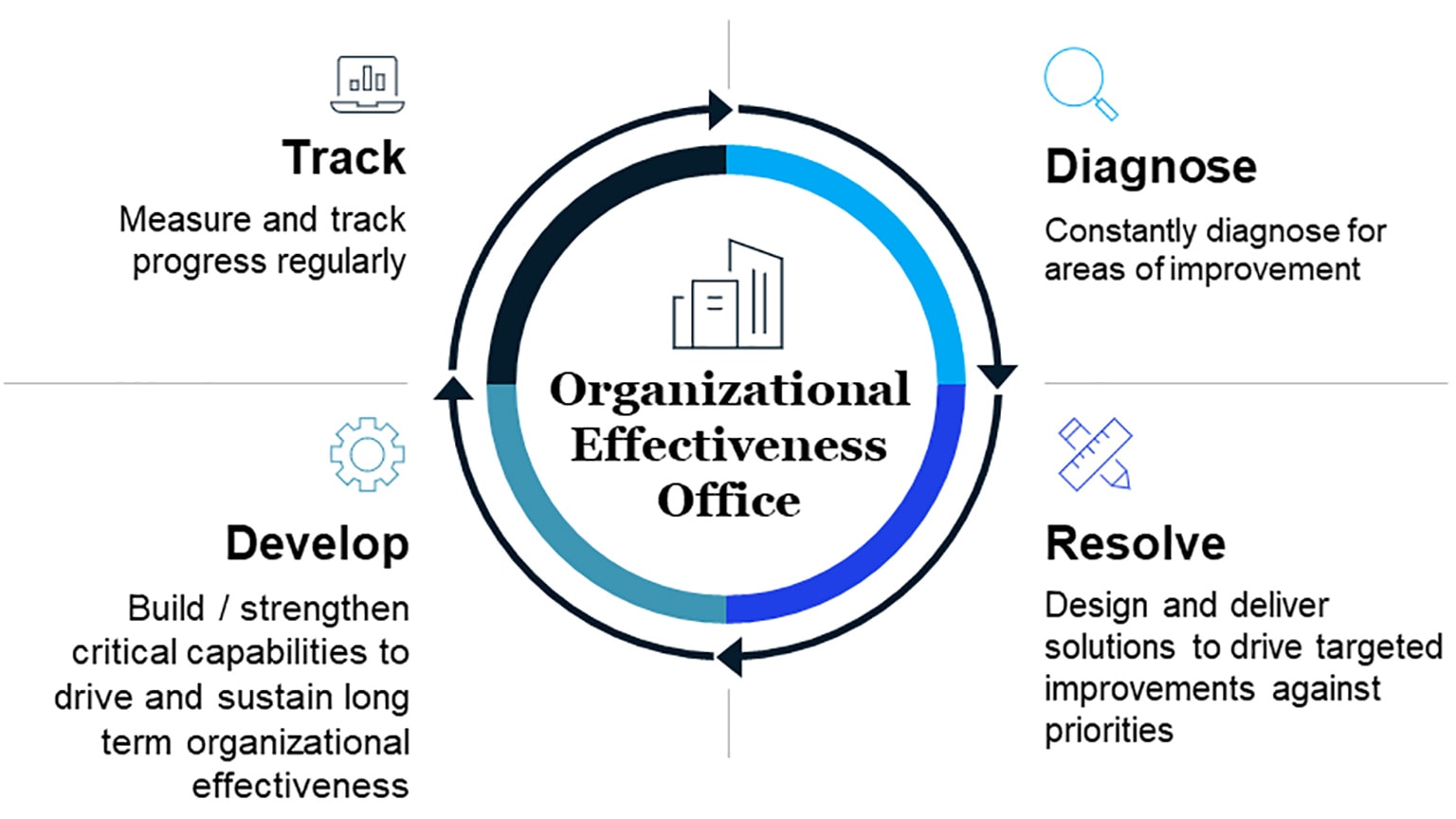Many organizations today find themselves in a continuous state of flux driven by a series of seemingly endless organizational redesigns. They must confront the brutal reality that as the pace of business accelerates, by the time one redesign is finally complete, it’s time to start another one.
To get off this “reorganization treadmill” and change the performance trajectory, organizations should move away from episodic “cure-all” transformations to building ongoing organization-effectiveness capabilities through the creation of an Organization Effectiveness Office (OEO).
How can an OEO help deliver on the value of a reorganization?
Large-scale transformations often result from a constant stream of failed, smaller-scale reorganizations across the business. When companies try to get ahead of this problem by setting up teams to address organization design, they typically reinforce the inertia of the status quo, lacking both a clear link to business strategy and the capabilities to drive success.
Deciding how to manage and implement a redesign is among the biggest decisions a leader can make to influence successful implementation and value capture. To that end, we offer five keys to building a successful OEO:
- Clear decision rights: OEOs require real decision rights and resources to prioritize and implement changes to avoid becoming stuck in a cycle of flagging risks while being unable to effect change. Importantly, this should be a two-way relationship where “internal customers” can provide feedback on the services they receive from the OEO.
- Strong leadership commitment: Transformations with strong CEO involvement are 2.6 times more likely to succeed, and even more so if decision rights and roles and responsibilities are clear.
- Strategy first: Priorities should clearly tie to enterprise strategy. An OEO should be empowered to challenge designs that do not enable the strategy or that may promote organizational siloes.
- Business-unit involvement: Leaders should align to relevant initiatives to enable seamless implementation and ensure the OEO is not operating in a vacuum. Resist the tendency to push initiatives to HR as a default and empower the OEO to bring together team members with the right skills and abilities.
- Holistic approach: Leaders often fall into the trap of thinking organization design is a pure “boxes and lines” exercise. The OEO should push leaders to address a holistic set of levers to ensure the desired outcomes are actually achieved. Levers include topics like process redesign, reskilling, workforce planning, and decision making.
How does an OEO operate?
An OEO can serve as a nerve center that regularly scans for pain points and misalignments, and coordinates the organization to sprint toward rapid resolution. The OEO typically manages a cadence of four core activities (see exhibit).

What does this look like in practice?
A consumer goods company previously identified several organizational inefficiencies, but because they lacked a mechanism to resolve them, they usually remained recognized but unaddressed. Then the company created an OEO to work across the business to constantly identify, prioritize, and resolve inefficiencies. As a result, the company significantly simplified its assortment process; clarified and streamlined handovers among global, regional, and local; and streamlined its overall organization.
Another organization, a manufacturing company, completed their first redesign in decades and opened an OEO to follow through with implementation. The OEO included both functional and business unit members who brought day-to-day operational and business perspectives. This OEO had a dual focus: driving continuous improvement against the post-implementation roadmap and working with executives to identify areas needing additional support. The OEO leader set the office up for success by emphasizing measurements of success and a cadence for updates.
Leaders who invest in and empower an OEO to help the business capture the value of a successful operating model transformation will get off the redesign treadmill more quickly while unlocking the promised value of current and future operating-model transformation efforts.

